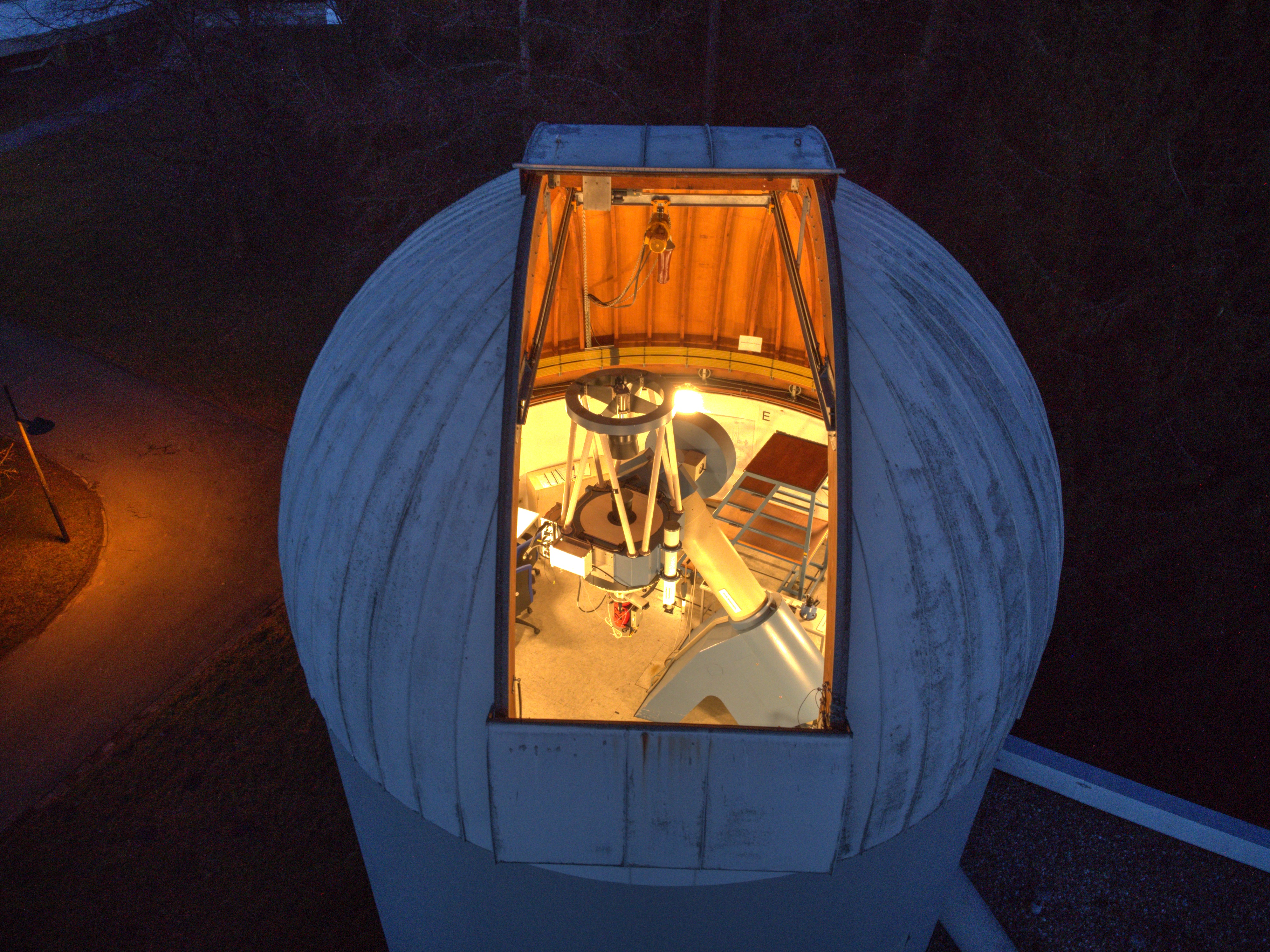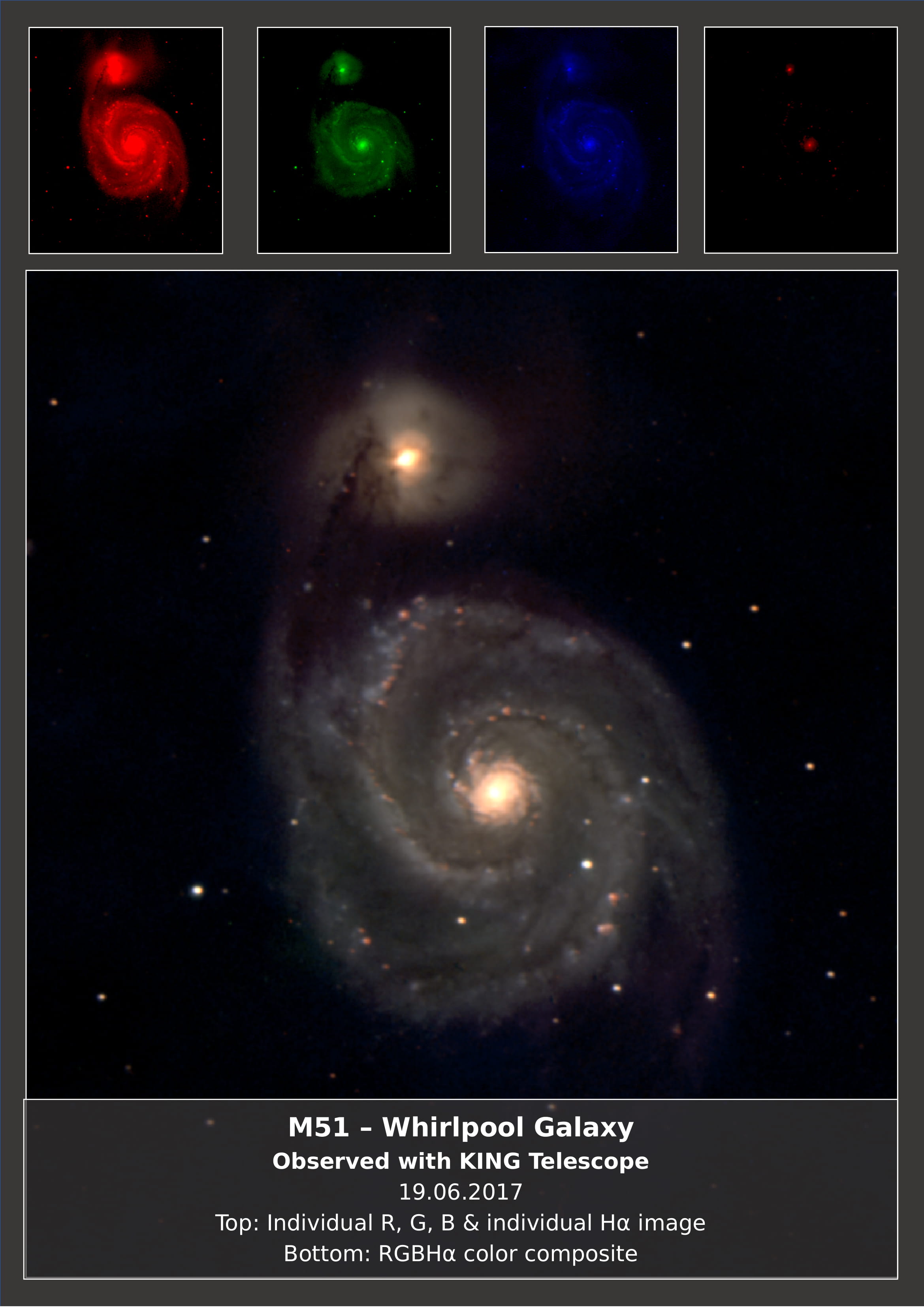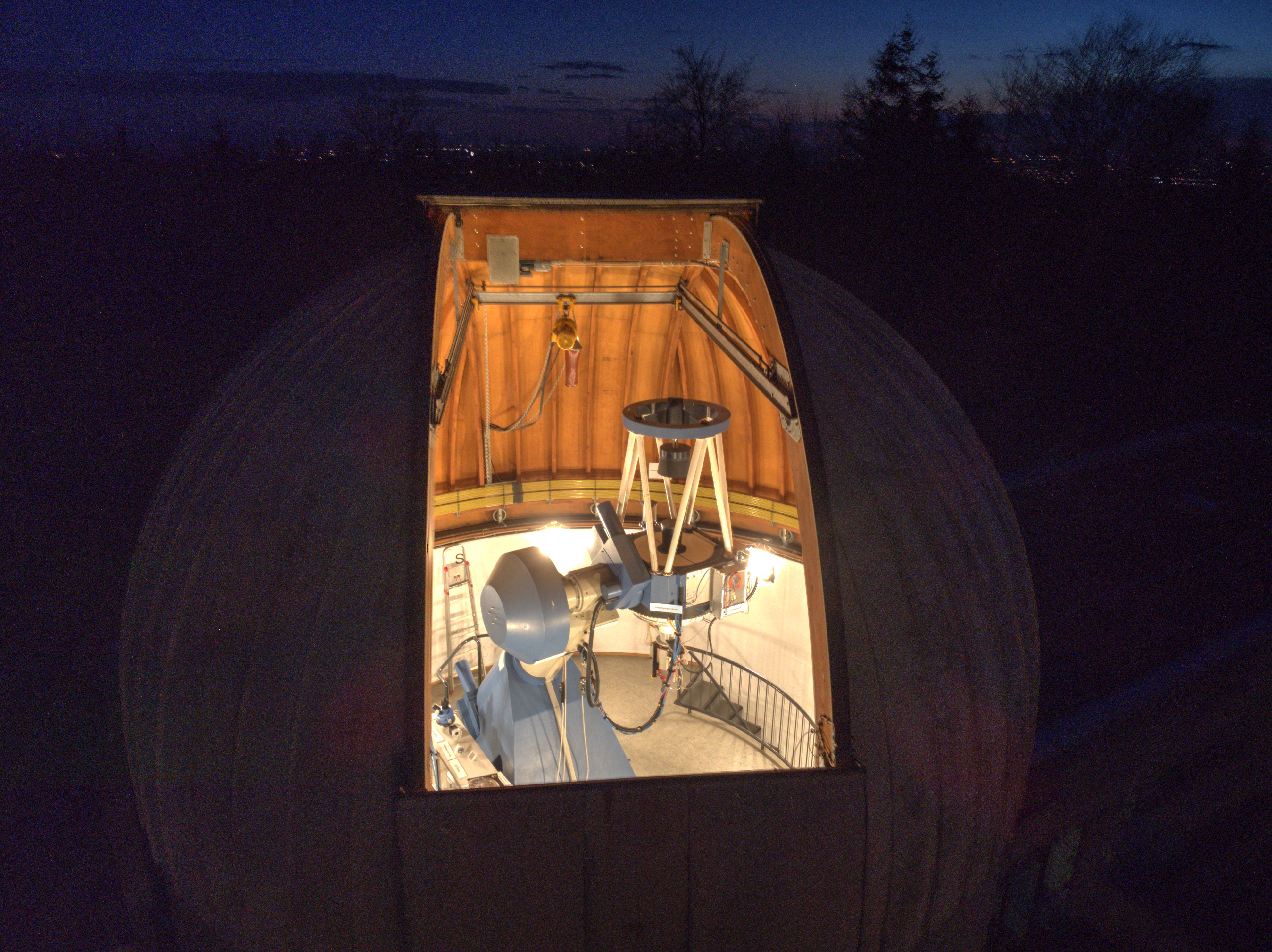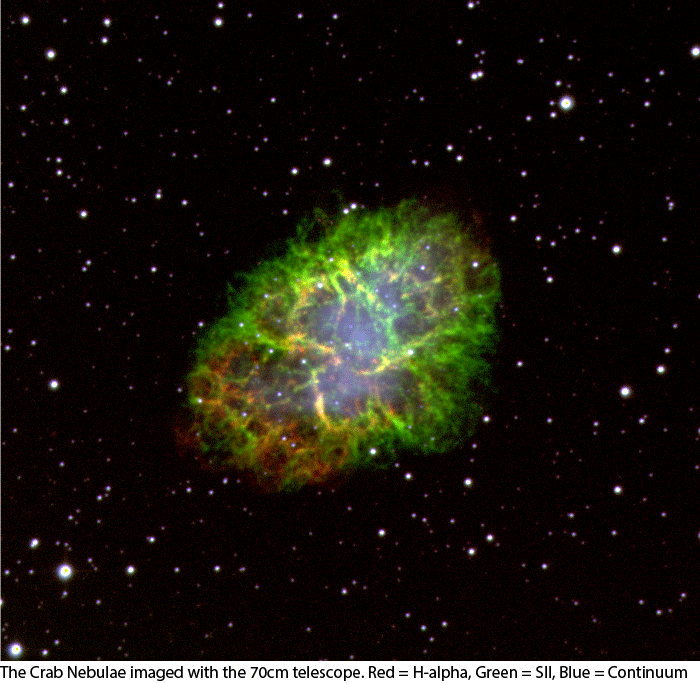The MPIA 70cm Telescope -- IAU observatory code 024
Located in the eastern dome of the Elsässer Lab, MPIA operates a 70 cm f/8 Cassegrain telescope ready to be used by students as well as staff for practice, scientific observations, testing of new hardware, or just: fun. It's alternative name - KING - was derived from the german phrase "Königstuhl Instrument zum in den Nachthimmel Gucken" ("Königstuhl Instrument for Night-sky Gazing").
The 70 cm telescope from the air ( © Dominik Elsässer)
It is currently equipped with a scientific grade 2kx2k back-illuminated, nitrogen-cooled SITe CCD -- identical to cameras used e.g. at Calar Alto Observatory. With a pixel size of 15umx15um it provides a field of view of 18.8x18.8 arcmin. A specially crafted manual filter slider allows unvignetted observations through a wide range of filters, including the standard series of UBVRI as well as an SDSS z' filter and a superb collection of high-performance narrow band interference filters for OII,OIII, H beta, H alpha, SII and SII-continuum (off-line passband). Unguided observations can be as long as 180s, giving you a limiting magnitude of ~19.5mag in the R-band.
M51 with the 70cm telescope ( © Victor Marian)
Typical seeing conditions are around 2 arcsec in the visible, but can be as good as 1arcsec. Being located quite outside the city the brightening of the sky due to street illumination is acceptable, and using one of the interference filters gives a pitch-black sky indeed, allowing the acquisition of stunning images of emission nebulae like e.g. the Crab Nebula M1 shown on this page.
While most observations performed with this telescope have no immediate scientific purpose, the telescope still plays a role in teaching future astronomers the basics of observing with a large telescope and professional camera. Apart from pure fun observations it has been used for a range of projects that place it in the same league as comparable telescopes at "real" observatories:
- Photometric data has been used in refereed publications, either to complement data taken with other instruments or to fill in gaps in long-term monitoring projects.
- It has been used to perform early tests with the Lucky Imaging technique and later on to pre-commission the AstraLux high-speed camera, which is offered as regular instrument at the Calar Alto 2.2m-telescope since 2006.
- Numerous astrometric observations of main belt asteroids and near earth objects have been obtained and submitted to the IAU's Minor Planet Center in order to either improve orbital elements of known asteroids or to confirm newly discovered potentially hazardous asteroids. For these observations the 70 cm telescope operates under the official IAU observatory code 024.
During these observations it has been unavoidable to discover a total of three asteroids, two of which have received a final number and become eligible for a real name. These are the main belt objects (202736) Julietclare and finally: (293934) MPIA. It is sincerely hoped that the latter asteroid will provide enough room to ease the institute's chronic deficit of office space once and for all as soon as interplanetary commuting can be handled correctly by the travel department.
The telescope is an ideal playground also for persons interested in the engineering part. There are quite a few projects that could be performed by anyone feeling skilled enough and willing to invest some time:
- Design of a computer-interfaced remote control for the dome rotation, including encoders to read the current position
- Adding the ability to open & close the dome remotely via computer
- Building of a computer-interface to read and control values like the telescope's position, focus, and general status
- Equipping the telescope with temperature and humidity sensors
It is also possible to contribute to some planned upgrades of the telescope, such as:
- Pointing model of the telescope shall be recalibrated with images with uniform distribution on the sky. A minimum of ~ 40-65 images are needed.
- Automatic defocus (change for each filter. Some runs shall be perform for each filter and epoch.
- Tracking issue (gets stuck, or jumps once in a while). Investigate this issue is needed too.
Apart from these "big" projects regular maintenance tasks are unavoidable to keep it operating.
Access to the telescope is currently granted only to those who are acquainted with the odds and ends of correct handling of liquid nitrogen. The necessary training is given by Werner Laun, preferably not for single persons but groups to keep the time effort small. These trainings will be organized as needed.
Dr. Jörg-Uwe Pott is the project leader of the KING telescope and lead responsible of the FP30 experiment.
Dr. André Boné is the current system engineer and manager of the KING telescope.
Anyone who wants to learn more about the telescope and possible observational and hardware projects or simply wants to use it and help with the regular maintenance is strongly encouraged to contact Jörg-Uwe Pott (jpott@…) or André Boné (bone@…).
Anyone willing to help with these duties is welcome. If you want to volunteer for any of those tasks, please don´t hesitate to contact André Boné.
KING mailing list
All interested users, and FP30 supervisor, please also subscribe to our mailing list king@… (https://mailer.mpia-hd.mpg.de/mailman/listinfo/king), which will facilitate the telescope use, and respective communication.
Clear skies!
Pictures with KING
The 70 cm telescope from the air ( © Dominik Elsässer)
More information, checklists, manuals & documentation (continuously improved):
- Observing with KING: KING upcoming events, CCD temperature, Emergency numbers, Observations manual, FAQs, Science cases ...
- Telescope: Telescope information, Background information, Issue list...
-
Teaching with KING: materials for the FP30 experiment
- check here: FP30: Manuals, Documents, Data
Attachments (6)
-
king70_astralux_ann.png (163.0 KB) - added by 12 years ago.
The 70cm telescope during AstraLux? pre-commissioning
-
king70_m1_ann2.png (219.4 KB) - added by 12 years ago.
The Crab Nebulae M1 imaged with the 70cm telescope
-
asteroid_mpia_citation_ann.png (12.4 KB) - added by 12 years ago.
Asteroid MPIA citation
- M51_Poster.jpg (304.0 KB) - added by 7 years ago.
- Picture_2-Dominik_Elsaesser.jpg (5.1 MB) - added by 3 years ago.
-
Picture_1-Dominik_Elsaesser.jpg (4.6 MB) - added by 3 years ago.
The 70 cm telescope from the air (© Dominik Elsässer)
Download all attachments as: .zip





